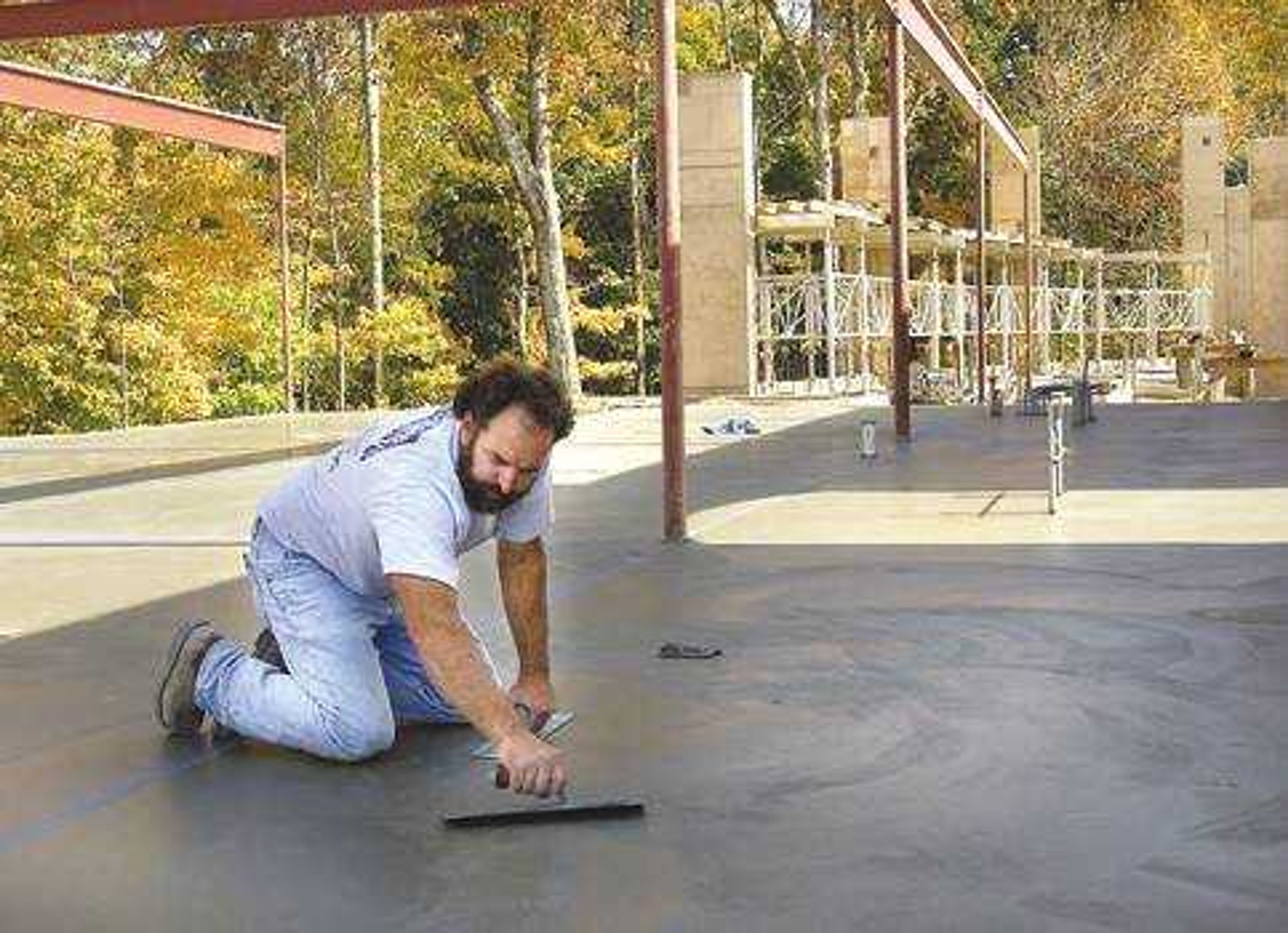New nature center to use recycled materials, ease flooding
Old Fords may keep the rain off visitors' heads at the nature center off Kingshighway near Interstate 55 between Jackson and Cape Girardeau. The roof, when finished, will be made of steel from recycled car bodies. The $4.7 million center will feature some recycled materials in its construction and flood protection for landowners downstream. It is slated for completion by the beginning of 2005...
Old Fords may keep the rain off visitors' heads at the nature center off Kingshighway near Interstate 55 between Jackson and Cape Girardeau. The roof, when finished, will be made of steel from recycled car bodies.
The $4.7 million center will feature some recycled materials in its construction and flood protection for landowners downstream. It is slated for completion by the beginning of 2005.
A.J. Hendershott, the outreach and education regional supervisor for the Missouri Department of Conservation, listed some of the unconventional building materials that architect Eric Miller of Peckham & Wright in Columbia, Mo., has included in his plan.
From the floor to the ceiling and even in the bathrooms, the center will showcase recycled carpet, beams of engineered wood, counter tops and toilet partitions of recycled plastics, and strategically placed windows and walls that conserve energy.
"We want to be an example for the wise use of Missouri's resources," Hendershott said.
The recycled carpet is cut in small squares that saves on the cost of replacing whole swaths of carpet when one part is worn. The beams, though not recycled wood, are the glued and compressed parts of trees that were destined for the trash heap. Hendershott said that they can be stronger than beams cut from whole trunks. Dark walls of a nonconductive material like stone or cement built near windows will heat up slowly in the sunlight. The combination of windows and walls will naturally provide some of the rooms' heat and light.
These materials could reduce the environmental impact of the project, but cost is still a consideration.
"We want to make this a reasonable project," Hendershott said. "If it will save us money in the long run, we'll do it even if it costs extra, but if not, we'll take a long hard look at it."
Less flooding
In river towns, rain flows over roads, roofs and parking lots and increases the intensity of floods during torrential rains and the seasonal ebb of the river. The marsh that the Department of Conservation will create on its land will lower flood levels south of the watershed and take the pressure off some of the riverside communities there. It will be a detention basin where the ground will absorb runoff.
The idea is not a new one, Hendershott said. There are detention basins in the La Croix and Mount Auburn subdivisions, for example, but the department will fill the marshland with native plants and animals, and it will attract other wildlife as it matures.
"I know that when people hear 'marsh' they think, 'well dad-gum it, that's all we need, is a swamp in the middle of Cape,'" Hendershott said. But the department plans to populate this marsh with unusual trees and plants, and create a haven for some of Missouri's native wildlife.
He has heard concerns that the marsh will attract mosquitoes, especially those that bear the West Nile virus.
"But the marsh will have an entire food chain -- bats, dragonflies and their larvae, and salamanders -- that will eat the mosquitoes both in the water and out," he said.
Peggi Zerbe, a longtime visitor to the park around the center's site, said that the planned center is long overdue.
"Cape has a tendency to not do much, for a university town, especially in terms of conservation projects," she said. "And we're running out of resources."
The center will hold educational tours and train teachers and other educators and give them the props they need to keep a child's attention, such as the furs of native animals.
A printout of the center's floor plan is available at the Department of Conservation building in the park off Kingshighway.
rgoodier@semissourian.com
335-6611, extension 127
Connect with the Southeast Missourian Newsroom:
For corrections to this story or other insights for the editor, click here. To submit a letter to the editor, click here. To learn about the Southeast Missourian’s AI Policy, click here.









